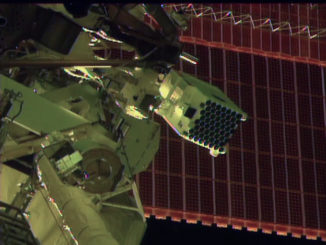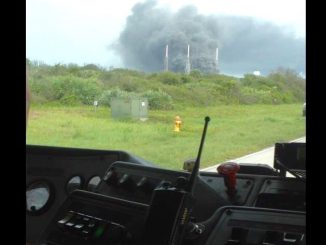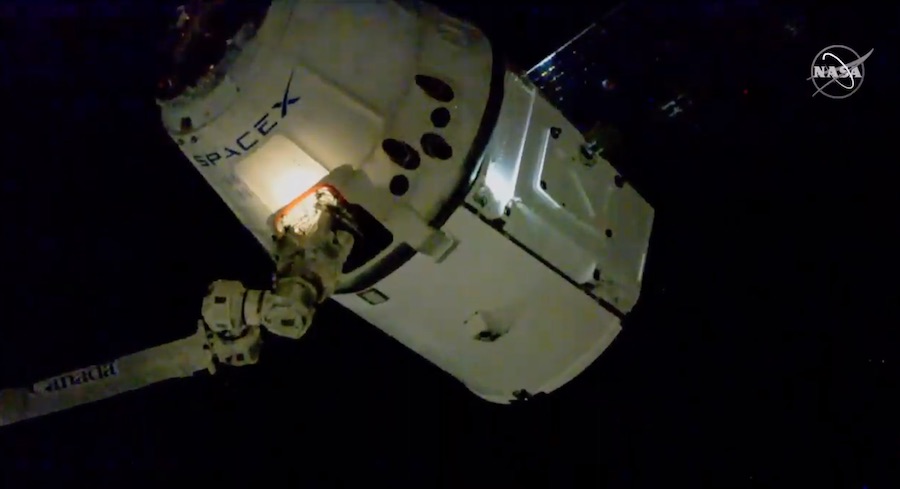
A commercial Dragon supply ship loaded with genetically-enhanced mice, a beer brewing experiment, a CubeSat developed by Mexican students and other scientific research payloads arrived at the International Space Station Sunday.
The SpaceX-owned robotic cargo freighter completed a three-day trek from a launch pad at Cape Canaveral with 5,769 pounds (2,617 kilograms) of supplies, experiments and hardware for the space station and its six-person crew.
Space station commander Luca Parmitano captured the Dragon spacecraft with the space station’s Canadian-built robotic arm at 5:05 a.m. EST (1005 GMT) Sunday. The robotic arm maneuvered the supply ship to a berthing port on the station’s Harmony module later Sunday, setting the stage for astronauts to open hatches and begin unpacking the fresh cargo.
The Dragon spacecraft lifted off Thursday on top of a Falcon 9 rocket from Cape Canaveral on SpaceX’s 19th resupply flight to the space station.
Along with 40 genetically-engineered mice and a beer experiment sponsored by Anheuser-Busch, the Dragon spacecraft delivered a Japanese Earth-imaging instrument and a payload to investigate the behavior of flames in confined spaces in microgravity.
The Dragon capsule that arrived at the station Sunday is making its third trip to the orbiting research complex. SpaceX recovered and refurbished the spaceship after two previous resupply missions in 2014 and 2017.
Here is a break-down of the Dragon spacecraft’s supply load. The figures below do not include the mass of cargo packaging, which is included in NASA’s overall payload mass:
- Science Investigations: 2,154 pounds (977 kilograms)
- Vehicle Hardware: 675 pounds (306 kilograms)
- Crew Supplies: 564 pounds (256 kilograms)
- Spacewalk Equipment: 141 pounds (65 kilograms)
- Computer Resources: 33 pounds (15 kilograms)
- Unpressurized Payloads: 2,037 pounds (924 kilograms)
The 40 mice delivered to the space station Sunday will help researchers gauge the effectiveness of an experimental drug to combat muscle and bone atrophy.
Eight of the 40 mice have been genetically-engineered to lack myostatin, a protein that acts to limit muscle growth in animals. The muscle-bound, myostatin-free mice — or “mighty mice” — are joined by four other groups of rodents, including groups that will be given an experimental drug in space to block myostatin activity and promote muscle growth.
All 40 mice will return to Earth alive on the Dragon capsule in early January. Scientists will administer the same myostatin protein blocker to some of the mice after they are back on the ground to assess how the drug affects their rate of recovery.
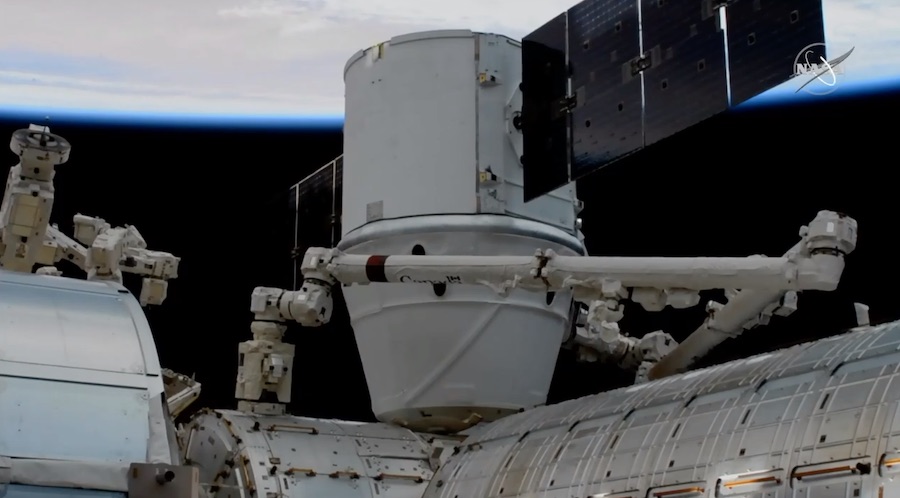
“The focus of this project is going to be to determine whether getting rid of myostatin in mice that we send to the International Space Station can prevent, or at least mitigate, the loss of muscle due to microgravity,” said Se-Jin Lee, professor at the Jackson Laboratory and University of Connecticut School of Medicine, and principal investigator for the rodent research experiment.
The drug trial to be administered to the mice on the space station also inhibits activin, a protein that regulates bone mass.
“By blocking activin with this drug, bone density increases significantly,” said Emily Germain-Lee, a co-investigator on the experiment and professor at University of Connecticut School of Medicine. “And as you probably know, astronauts who spend a lot of time in space lose not only muscle mass, but also bone mass.
“Anything that can be done to prevent muscle and bone loss would be very important to maintaining the health of astronauts during space travel,” Germain-Lee said. “But … loss of bone mass is also a huge health problem for people here on Earth. There are actually lots of diseases that lead to bone loss in both children and adults. And, of course, osteoporosis is a big health issue for people who are elderly or bedridden.
“By testing this experimental drug in life subjected to microgravity, we hope to be able to test the therapeutic strategies for combating both the bone loss and muscle loss that occur in lots of different conditions,” Germain-Lee said.
Anheuser-Busch’s experiment will study the malting of barley in microgravity, which could lead to the brewing of beer in space, the company says.
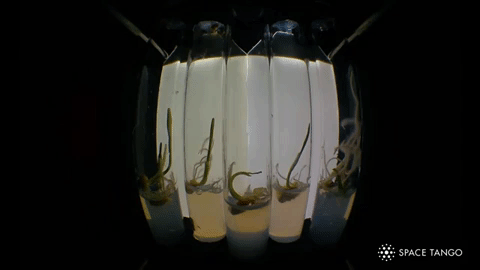
Gary Hanning, director of global barley research at Anheuser-Busch, said the company’s malting experiment aboard the Dragon cargo mission is the third in a series of investigations looking at how the environment of space affects brewing processes.
“This series has been constructed to look at the impact of space environment on the germination process of barley,” Hanning said. “So the germination processes is taking seed and creating the new plant from that, and so that’s a very key step in the life cycle of any plant, and particularly important to malting barley. So much of our research on earth is focused on seed germination and the environmental impacts that would affect seed germination, as well as physiological effects.”
Hanning said Anheuser-Busch’s experiments in space have given the company’s research team a new perspective.
“From our previous studies on the space station, we’ve noted that the gene expression — that’s the genes that are turned on or turned off and to what degree — are different on the space station then they are on Earth,” he said. “We think it’s a response to the stress, because it’s an abnormal environment, so there’s a stress related there. So gene expression is a part of that cascade of events as part of germination.”
The experiment will look at hardware solutions to support barley malting on the space station.
“Malting is basically a biological process,” Hanning said. “It is to convert barley into a product called malt, which is used in a lot of food and beverage applications. Malting is actually a three-step process,” he added, beginning with the steeping, or hydration, of barley grains, followed by germination and drying.
The Anheuser-Busch experiment launched with just 2.5 ounces (70 grams) of barley grains, separated into two units.
Another research payload aboard the Dragon spacecraft will allow scientists to observe flame behavior in confined spaces in microgravity. The combustion package includes solid fuel samples that will be ignited inside a protective enclosure on the space station.
“We want to study how solid materials burn in different confined conditions, and how fire interacts with its immediate surroundings,” said Ya-Ting Liao, a professor of mechanical and aerospace engineering at Case Western Reserve University.
“It turns out this is a very hands-on experiment,” said Paul Ferkul, an investigator on the confined combustion experiment. “We’re talking with the astronaut, we’re interacting with him, we’re telling him what to do, how to set the parameters. And he, in turn, tells us how it’s looking, what he’s experiencing, and the astronauts are very glad to do this.
“It’s way outside their usual routine on the space station, so that helps us a lot because they’re enthusiastic for our work, and they make very good investigators because of that.”
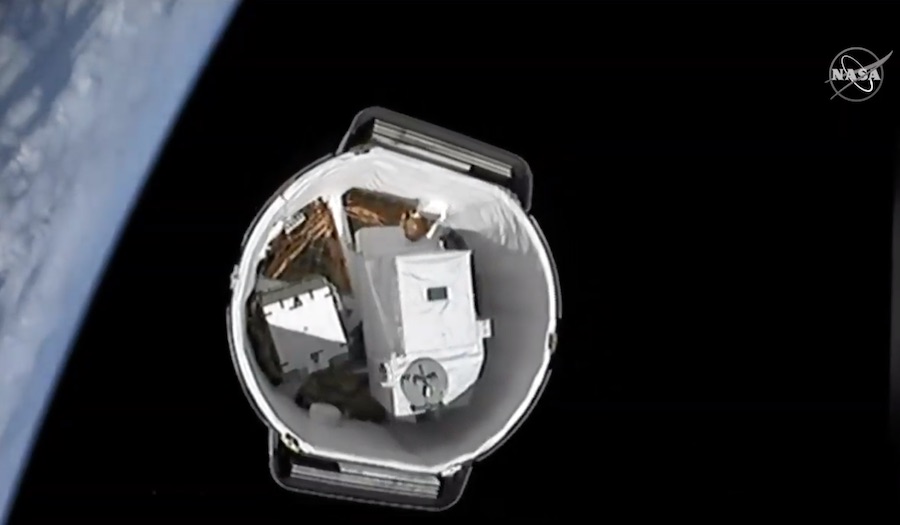
The Dragon capsule’s external cargo bay is loaded with a Japanese Earth-imaging instrument with high spectral sensitivity. The Hyperspectral Imager Suite, or HISUI, instrument will image Earth’s surface in 185 spectral bands, allowing scientists to distinguish between the composition and type of a range of vegetation, soil, rocks, snow, ice, and human-made objects like buildings, roads and other structures.
Using the robotic arm, the HISUI instrument will be mounted to a fixture outside the station’s Japanese Kibo lab module. It’s a follow-up to the Japanese-developed ASTER instrument on NASA’s Terra satellite, which launched in 1999.
A new lithium-ion battery for the space station’s solar array truss is also stowed inside the Dragon capsule’s unpressurized trunk. It will replace a battery flown to the station by a Japanese HTV cargo ship last year.
That battery was damaged by an electrical short soon after it was installed on a spacewalk.
Other equipment delivered to the space station included a robotic tool stowage platform to store leak detectors outside the space station, and upgrades to allow scientists to make subtle measurements of gravity using the Cold Atom Laboratory, a research facility inside the orbiting lab.
NASA and commercial teams have disclosed seven CubeSats stowed inside the Dragon spacecraft for deployment in orbit, including the first nanosatellite built in Mexico to fly to the space station.
Developed by students at the Universidad Popular Autónoma del Estado de Puebla, or UPAEP, in Puebla, Mexico, the AzTechSat 1 spacecraft is a cube-shaped satellite that measures just 4 inches (10 centimeters) on each side. Its primary purpose is to demonstrate inter-satellite communications links with commercial Globalstar data relay satellites, a capability that could reduce the reliance of small spacecraft for data downlinks through limited passes over ground stations.
NASA provided a launch for AzTechSat 1, which is the fourth satellite to be entirely built in Mexico, and the first to fly to the International Space Station. Mexican officials hope the project provides students with experience and inspiration to grow a larger space economy in the country.
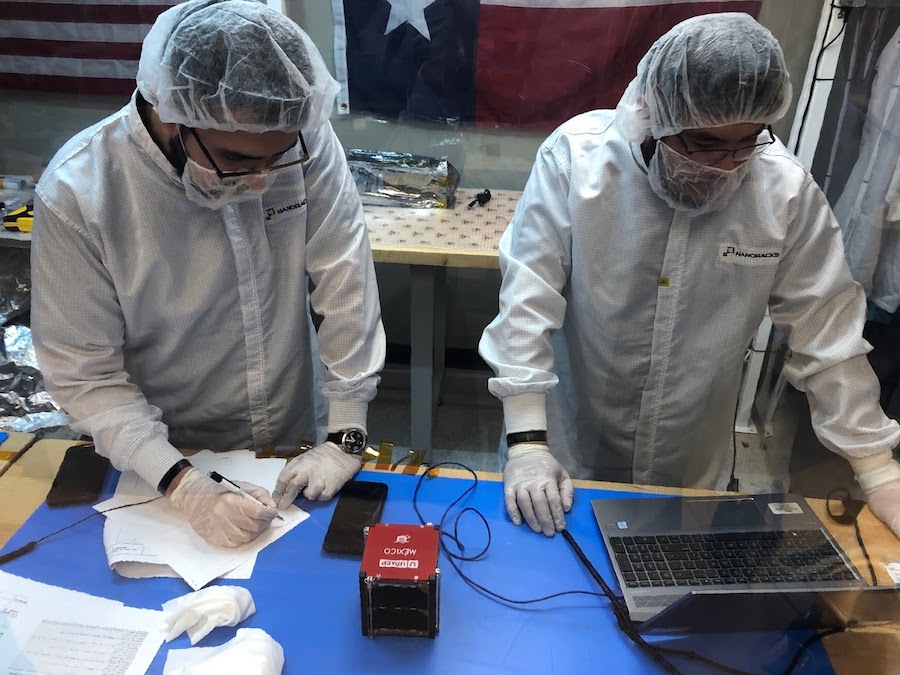
“For Mexico, I hope this will lead to future research and telecommunications projects involving universities or new emerging companies,” said Francisco Fernando Eugenio Urrutia Albisua, a vice president at UPAEP.
AzTechSat 1 will be ejected from a deployment mechanism outside the space station early next year.
Rosa Reyna Gonzalez Cancino, an engineering student at UPAEP, said her experience in building the AzTechSat 1 satellite has already helped her education.
“I’m actually taking my first class in satellite technology, so its a great advantage because I know basically everything they’re teaching me,” she said. “Of course, you learn better in practice than in just studying, so it’s a great advantage.”
Another CubeSat delivered to the station Sunday, named Qarman, will gather data on the extreme conditions during re-entry into Earth’s atmosphere. The Qarman CubeSat is about the size of a toaster oven, and was developed by the Von Karman Institute in Belgium for the European Space Agency.
Sensors in the blunt forward end of the Qarman nanosatellite will collect data during re-entry on temperature, pressure and brightness, then the craft will transmit the data to scientists through the Iridium satellite network. The CubeSat is expected to survive re-entry, but not its impact with Earth’s surface, making it imperative to relay the measurements via the Iridium network, according to ESA.
Developed by a consortium of U.S. universities, companies and the Air Force Research Laboratory, the SORTIE CubeSat carries instruments to study the ionosphere, a layer near the boundary between space and Earth’s atmosphere that plays an important role in space weather.
A CubeSat named CryoCube inside the Dragon spacecraft will also be released from the station early next year. CryoCube is a partership between Sierra Lobo, an Ohio-based company, and NASA’s Kennedy Space Center to prove low-cost technology that can cool payloads to cryogenic temperatures in space. The technology could help future missions keep cryogenic fluids, such as rocket fuel, cold for long durations in space.
Another tiny satellite named MakerSat 1 developed by students at Northwest Nazarene University in Idaho is also packed inside the Dragon spacecraft. Designed to be quickly snap-assembled by astronauts on the space station, it will be mounted with its deployer to a Northrop Grumman Cygnus cargo freighter before it departs the complex Jan. 13.
The Cygnus will deploy MakerSat 1 soon after leaving the space station.
Two other NASA-sponsored CubeSats also launched on SpaceX’s Dragon capsule for transfer and deployment from the Cygnus supply ship.
The Compact Infrared Radiometer in Space, or CIRiS, CubeSat will test the performance of a miniature Earth-observing instrument built by Ball Aerospace. The instrument on the CIRiS spacecraft — about the size of a briefcase — has applications in soil moisture observations in support of drought monitoring.
The EdgeCube nanosatellite was developed by students at Sonoma State University, Santa Clara University and Morehead State University is designed to see ecosystem change over time.
Email the author.
Follow Stephen Clark on Twitter: @StephenClark1.

